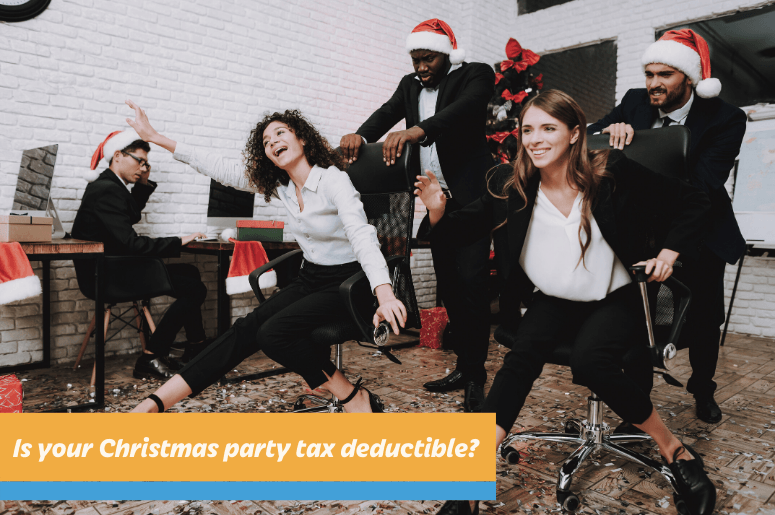Is your Christmas party tax deductible and other tax questions for the festive period…

- Is our Christmas party tax deductible?
- Are Christmas gifts for staff tax deductible?
- Are client gifts tax deductible?
- As you enjoy the holiday season, don’t forget the fringe benefit tax (FBT) and income tax implications.
The two main methods of calculating FBT for your Christmas party
In accordance with the FBT Act, employers have the freedom to choose how they calculate their Christmas entertainment expenditure.
The two popular calculation methods are the 'actual method' and the '50/50 method'.
The actual method: this is where entertainment costs are divided between employees, their families, and non-employees, including clients and suppliers.
Expenditure on employees is tax deductible and can be liable to FBT. Any expenditure on non-employees isn't liable to FBT and is not valid for any tax deductions.
The 50/50 method: This is where 50% of the total expenses are subject to FBT and 50% is tax deductible.
This method is often the more popular choice due to the simplicity of the calculation.
However, under this method, it is important to remember that employees’ food and drink are not exempt from FBT, even if the event is held on the employer's premises.
The minor benefit exemption and the general taxi travel exemption can similarly not be applied.
What is the minor benefit exemption?
The minor benefit exemption is an exemption from FBT for most benefits, such as gifts, of less than $300 that are given to individual employees or their family members infrequently.
Under this exemption, a $299 gift may be exempt!
Benefits provided around the same time (such as drinks and gifts) are not added together when applying this threshold.
To put this information into context, let's use a typical Christmas party as an example...
Christmas party tax deductible calculations: an example
A Christmas party is hosted by an employer for employees and their spouses.
A total of 40 guests are in attendance. The cost of food and drink is $200 per person and no other provisions were supplied.
Using the actual method: for all 40 guests, no FBT is payable but the event expenses aren't tax deductible.
Using the 50/50 method: the expenditure is $8,000, so $4,000 is liable to FBT and tax deductible
Christmas gifts for staff
Whether you are planning on holding a Christmas party or not, Christmas gift-giving is the next scenario to consider.
A Christmas gift can be a great personal way to show your employees your gratitude but how should gifts be handled 'tax-wise'?
They need to be categorised into two areas:
- Gifts that are considered entertainment - these include event tickets, airline tickets, etc.
- Gifts that aren't considered entertainment – these include jewellery, alcohol, flowers, etc.
Christmas gifts to staff calculations: an example
If you give gifts to employees that are not considered entertainment, they are liable to FBT, unless the 'less than $300' minor benefit exemption is applicable, and are tax deductible.
If you give gifts to employees that are considered entertainment, they are tax deductible and are liable to FBT, unless 'less than $300' minor benefit exemption is applicable.
Are gifts to clients tax deductible?
Gifts to suppliers, clients, etc. whether they are considered entertainment or not, are not liable for FBT and are not tax deductible.
Need some tax or accounting advice before the Christmas period?
Contact us at Ascent Accounting in Perth for reliable tax accounting and bookkeeping advice that makes sure there are no nasty surprises after the holiday season.
Need help with your accounting?








